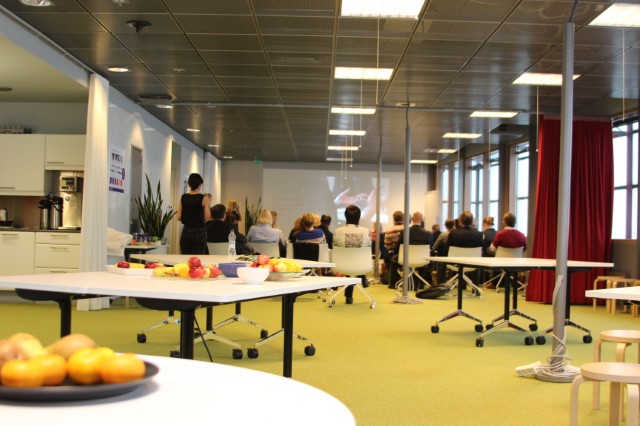Sitra was recently visited by representatives of the UK-based think tank and innovation investor Nesta. The day’s involved brainstorming sessions between the strategy, impact investment and research teams of the two organisations. Since the meeting between the research teams also touched on communications, here is a link to the highlights of the discussion – along with a glance at what’s new at Sitra since May 2014 and the drafting of our communications principles.
At Sitra, we sometimes struggle when choosing a suitable benchmark for performance assessment and improvement. Public sector organisations? We have much in common with them, except that we are independent. Companies? Sure, except that we are non-commercial. The third sector or research institutes? Most definitely, except that compared to non-governmental organisations (NGOs) we are more broad-based and are bigger than most Finnish think tanks.
Finding international benchmarks is therefore a key issue, and one of the best matches with Sitra is the London-based Nesta. Operating in Britain’s highly competitive market, Nesta plays a slightly different role to Sitra. It is a stand-alone operator with a national mission, in receipt of public funding independent of the state budget or political control.
What the research functions of Sitra and Nesta have in common is flexibility in the selection of research methods: research is prompted by both internal and external needs and the best possible researchers are selected on a case-by-case basis, either from within or outside the team. Both organisations place themselves somewhere in the middle of a spectrum with academic research at one end and research driven by a political and/or interest group-specific agenda at the other.
There are also some differences – in the volume and funding of research ventures. Nesta has nearly 40 people focused on research, and new work is published every week. Nesta is able to apply for external funding for its research ventures, whereas our research team is more closely linked to projects that are ongoing or under preparation.
(However, there could be an even closer connection; matching ”thinking” with ”doing” is a topic worthy of a weekly bulletin of its own at some point.)
When it comes to communicating about research, Nesta’s people are fascinated by the same questions as we are. As a communications-minded person, I was unsurprised to hear Nesta’s people’s thoughts on building up anticipation among stakeholders (the media in particular) prior to the publication of research results. Unfortunately, relationship-building capacity of this kind is rarely part of researchers’ DNA. In fact, communications departments are often structured for handling day-to-day tasks rather than being proactive.
In May, we outlined our own communications principles related to research aimed at achieving an impact. We returned to this topic a while ago, when I took the opportunity to present some small steps that the team has taken towards improving its communications approach since May.
These steps include the following:
– for the first time, the tasks and members of the research team will be introduced in their own section of Sitra’s website (the research professionals may, and many of them do, also have other areas of responsibility within Sitra);
– we have honed the communication guidelines inside the team and drawn up a separate timeline to demonstrate (and remind people of) the possibilities offered by the communications and various communication services that are available throughout a research project;
– this series of weekly blogs was set up for the discussion of the topics on which the research team is working.
In the long run, our intention is to publish all of the research and study work carried out at Sitra in an inviting package and an easily reusable format, while also making data easy to find. We are currently publishing a wealth of materials on our web pages and on SlideShare in particular, mainly for storage purposes.
In addition, we have no compunction about “co-opting” good ideas. Nesta recently published a list of Britain’s best social entrepreneurs and innovators who are changing society for the better. Perhaps we should compile a list of our own?





Recommended